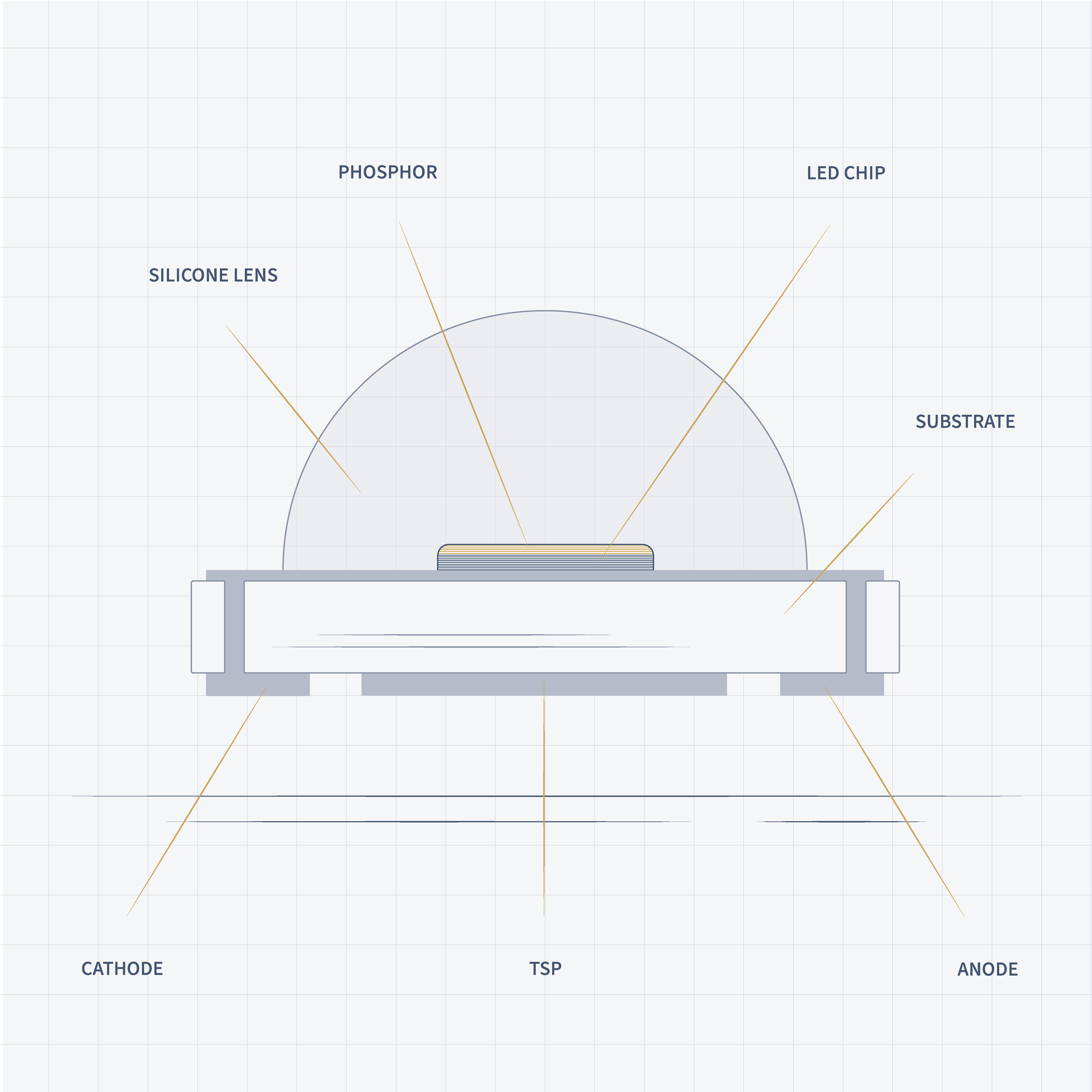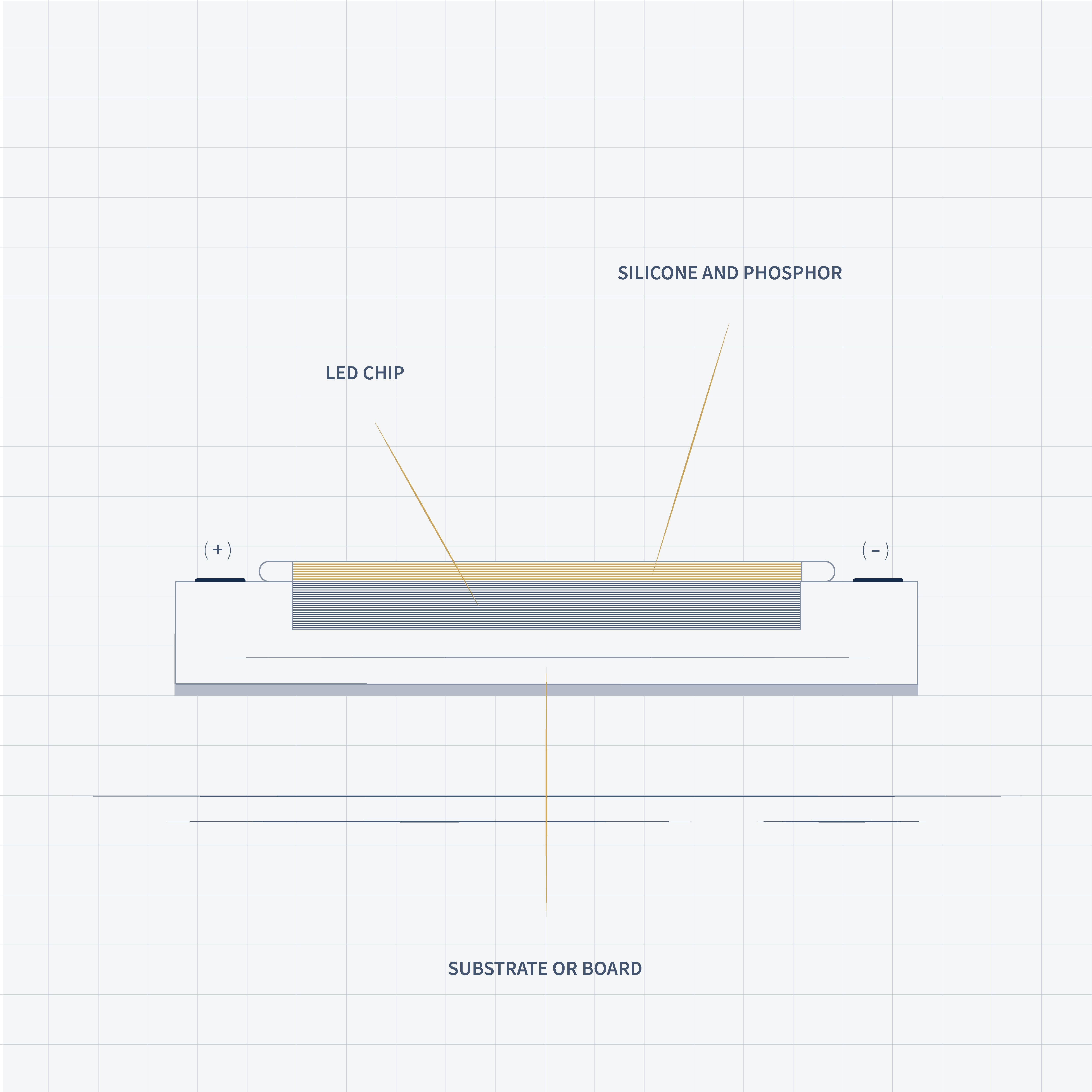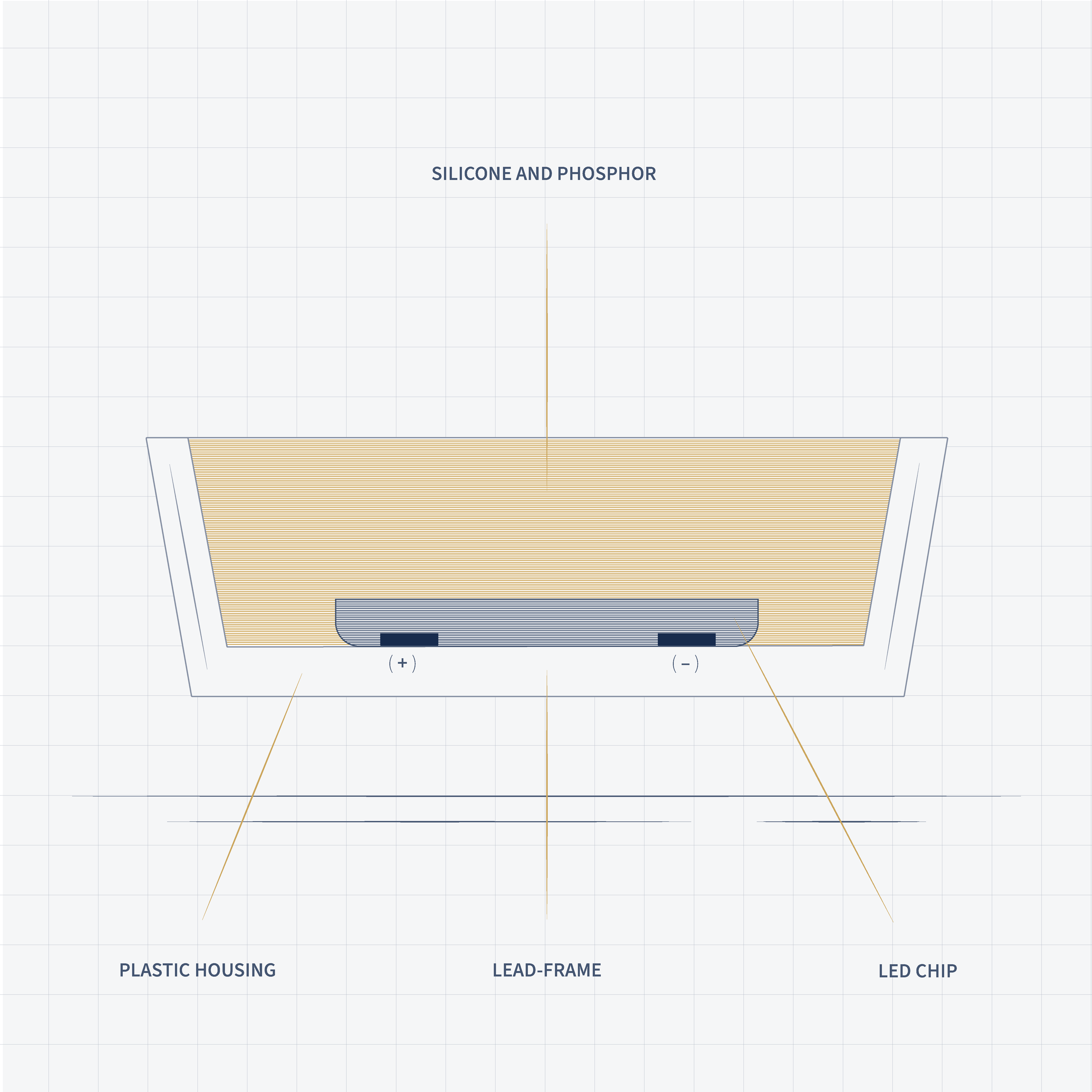Our LED types
LED stands for Light-emitting diode and it is a semiconductor that emits light when exposed to electricity.

Structure of an LED
All white LEDs have a chip as their base. When electrically stimulated, it emits blue light. The chip is covered in phosphor mixed with silicone, which converts the blue light into white light. The composition of the phosphor determines the colour temperature and colour rendering of the LED. LEDs are divided into types according to how they are constructed. They have different properties and are suitable for different applications and luminaire types.
Mid-Power – our most common LED
A mid-power LED is basically a cladded polymer-based package with a blue chip at the bottom. The cavity is filled with phosphor and silicone, which converts the blue light into white. The chip is powered by two wires (often gold) that connect to the top of the chip.
In order to extract the maximum amount of light, the cladding is often covered with a thin coating of silver that serves as a reflector. This type of LED is not suitable for harsher environments, such as outdoors, as silver can react with and be discoloured by aggressive gases. Discolouration results in a dramatic reduction of the LED’s performance and light output and a change in colour temperature.
The underside of the package consists of a lead-frame (L/Frame). This creates an electrical and thermal connection between the LED and the PCB to which the LED is soldered.
Mid-power LEDs are used in many different types of luminaires, mainly in indoor environments, and are placed on a PCB which then creates what we call an LED module. The LED modules can have a variety of shapes.
High-Power — suitable for outdoor use
In high-power LEDs, the chip sits on a plate (often ceramic). The chip is covered in phosphor and a silicone lens that diffuses the light. The design makes a silver reflector unnecessary. The robustness of the LED makes it suitable for luminaires with a long burn-time and in harsh environments, such as outdoors.
High-power LEDs, like mid-power LEDs, are mounted on a PCB and create the /D module. This usually has an aluminum base for better heat dissipation.
COB (Chip On Board) - for spotlights and downlights
A Chip On Board (COB), like the high-power LED, is built on a base plate of aluminum or ceramic. It has a dimple where many small chips are placed together and then filled with a mixture of silicone and phosphor.
The luminous surface of the COB is referred to as the Light Emitting Surface (LES) and describes the diameter of the surface in millimetres. A COB with a luminous surface of 14 mm has up to 100 chips.
A COB on an aluminum plate has a silver reflector, which makes it sensitive and thus unsuitable in some environments. A ceramic-based COB has a high reflectance and can act as a reflector. The ceramic COB is therefore suitable for harsher environments. COBs are used in spotlights and downlights, for example, often in combination with some type of active optics. A COB corresponds to an LED module and forms its own circuit board.
Two types of LED chips
A common feature of the LED types described above is that they can contain different types of LED chips. Traditionally, the LEDs contain a so-called Epi-Up chip. An Epi-Up chip is constructed so that electrical contact is made on the top side via gold or silver conductors. As the contact is made on the top side, which is in the direction of the light, it “steals” some of the light. In some LEDs (e.g. Fagerhult Outdoor and Premium) there is a more modern chip called Flip-Chip. A Flip-Chip is designed so that the contact is on the opposite side from the light direction, which means that this type has better light output. The Flip-Chip design also provides a shorter thermal path, which is positive in terms of efficiency and current resistance.



